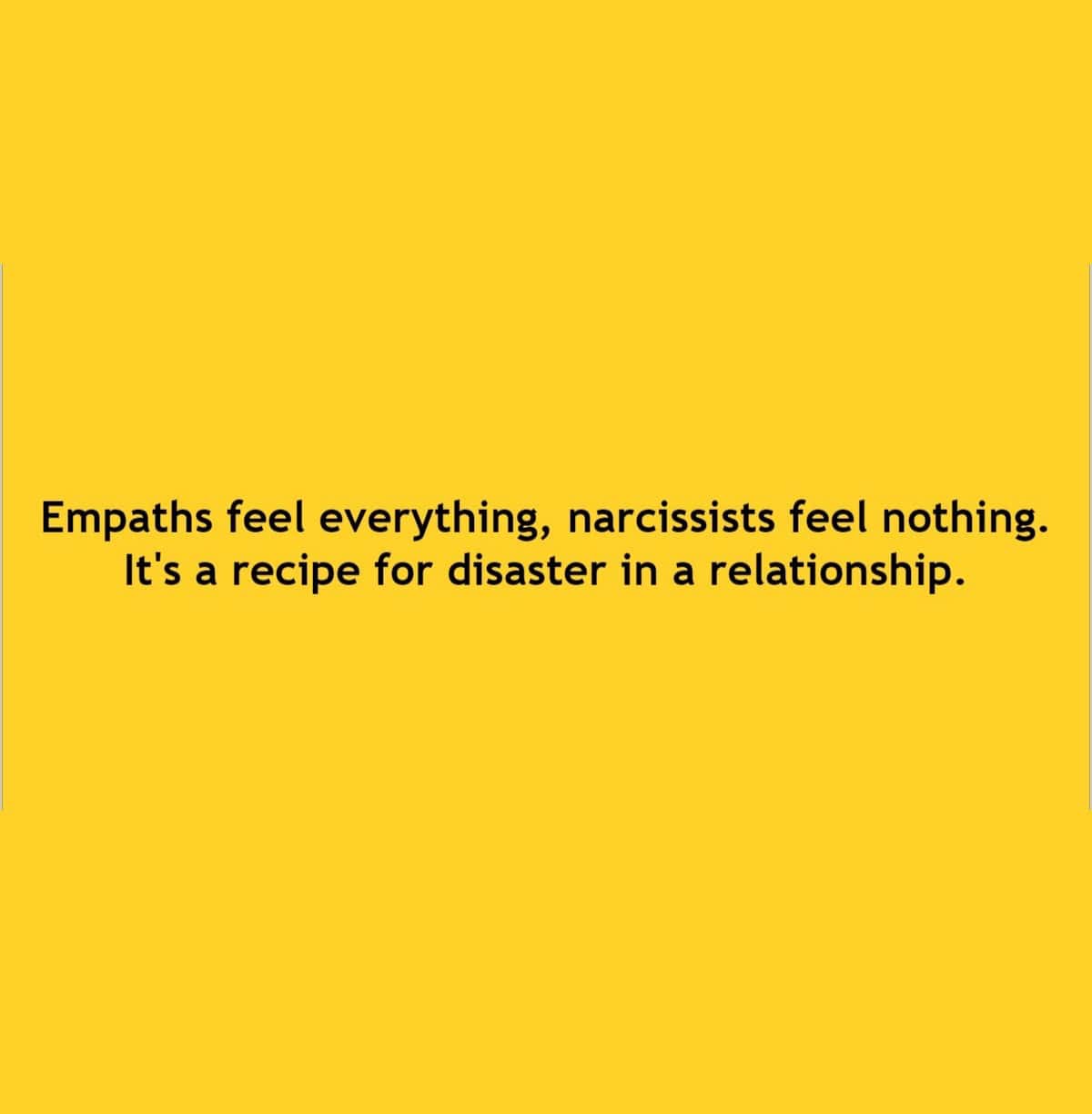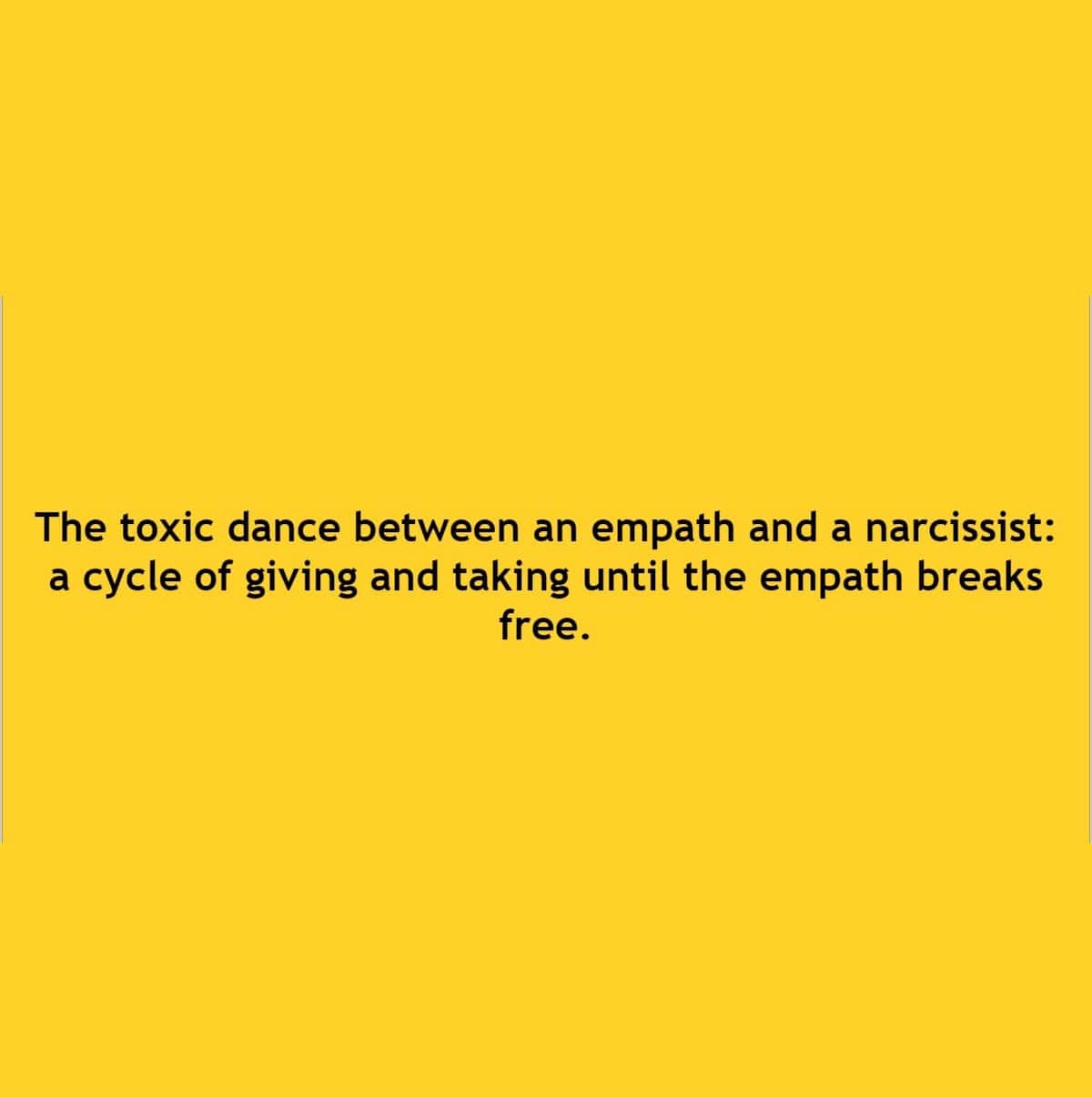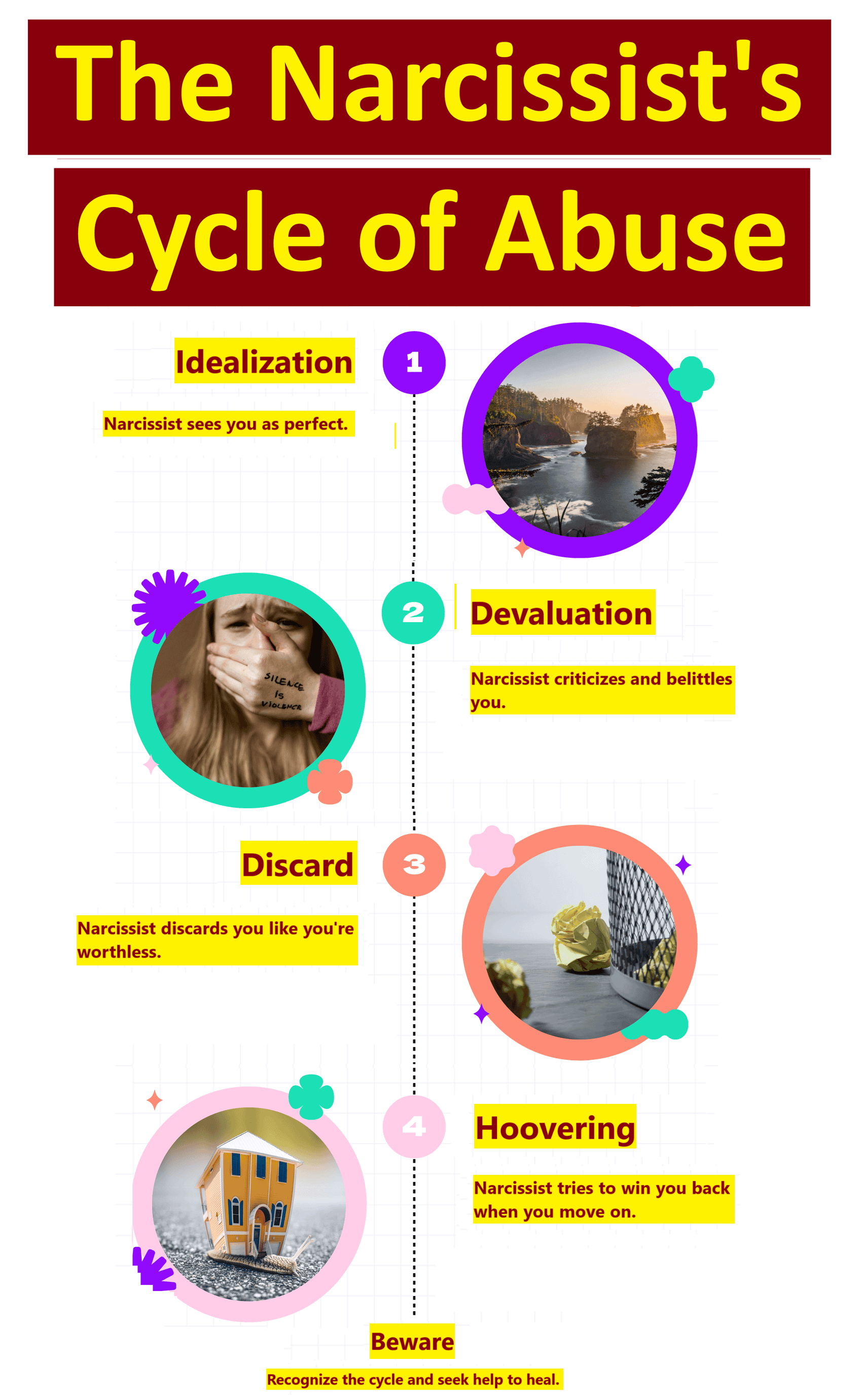In relationships between an empath and a narcissist, the initial stages often feel like destiny. The narcissist’s charm and confidence create a powerful attraction, sweeping the empath off their feet with flattery and grand gestures.
This intense connection feels genuine and deep, amplified by the empath’s natural tendency to see the best in people. However, this bond often serves the narcissist’s agenda, leading to a cycle of control and dependency.
Early Stages of the Relationship
1. Initial Attraction
The initial attraction between an empath and a narcissist often feels like fate. You might notice a powerful magnetic pull—a connection that feels almost too good to be true.
Narcissists typically exude confidence and charm, making them highly attractive. They can sweep empaths off their feet with flattery, grand gestures, and intense eye contact.
The empath’s natural tendency to see the best in people adds fuel to this quick spark, making the connection appear genuine and deep.
2. Intense Connection
Quickly, the relationship advances to an intense connection, where the empath and narcissist feel inseparable. This stage is marked by intense emotional exchanges and frequent, deep conversations.
Empaths may feel they have found their soul mate due to the narcissist’s ability to mirror their emotions and create a sense of unity.
You might find yourself prioritizing the relationship over other aspects of your life, as the narcissist’s constant attention and seeming vulnerability can be incredibly intoxicating.
However, this deep connection usually serves the narcissist’s agenda to gain control and dependency from the empath.
The Cycle of Idealization and Devaluation
3. Idealization by the Narcissist
Narcissists often begin relationships by showering their partners with affection. During this phase, you might feel like the most cherished person on earth.
Compliments, grand gestures, and constant messages make you believe the connection is extraordinary. This idealization plays a crucial role in binding you emotionally and mentally to the narcissist.
Narcissists adopt the persona they think will enchant you. They mirror your values, interests, and desires to appear as your perfect match.
Through this reflection, you start seeing them as an ideal partner, overlooking any red flags. It’s important to recognize this phase as a tactic to establish control.
4. The Empath’s Response
Empaths respond to this intense attention with openness. You, as an empath, feel an immediate bond and reciprocate with genuine affection. The relationship feels incredibly deep and fulfilling, leading you to invest emotionally without reservations.
Empaths, eager to nurture and heal, often give themselves fully. You might overlook early warning signs, believing your love can foster a genuine and lasting relationship.
However, this vulnerability fuels the narcissist’s objective of manipulation and control, setting the stage for the devaluation phase that follows.
Tension and Conflict Escalation
5. Growing Tensions
The relationship with a narcissist often leads to mounting stress. Initially, the empath might dismiss small irritations, attributing them to normal relationship dynamics. However, these minor grievances accumulate, creating an undercurrent of discomfort.
You might sense unease as the narcissist imposes subtle control measures, questioning your actions, decisions, or even friendships. The empathy that initially seemed like a strength now becomes a source of internal conflict.
You might start feeling unappreciated, misunderstood, and emotionally drained, leading to a noticeable shift in the relationship’s atmosphere.
6. Conflicts and Arguments
As tensions rise, conflicts and arguments become frequent. The narcissist often uses arguments to maintain control, employing tactics like gaslighting, blame-shifting, and personal attacks. If you express concerns, the narcissist feels threatened and responds defensively, escalating the situation.
These arguments are rarely resolved; instead, they lead to emotional exhaustion for you. You might find yourself constantly doubting your feelings and perceptions, questioning if the issues in the relationship are your fault.
Consequently, the relationship becomes a battleground where genuine communication is overshadowed by manipulation and power struggles.
The Turning Point
7. Realization and Awakening
The turning point in a toxic relationship often begins with realization and awakening. You start noticing patterns that can’t be ignored. The once enchanting charm of the narcissist now appears as manipulation. Small discrepancies in their stories and actions surface, making you question their authenticity.
Signs like gaslighting and blame-shifting become clear as manipulation tactics. You begin to see the relationship’s impact on your mental and emotional health.
Increased anxiety and lowered self-esteem are red flags. Understanding these signs is the first step to reclaiming your power and acknowledging the need for change.
8. Decision Making
After awakening comes a critical phase: decision making. You weigh the pros and cons of staying or leaving. Thoughts about your well-being take precedence over the fear of change. You consider the support network you have, including friends and family.
The role of professional guidance, like therapy, also comes into play. Emotions sway you, making the decision arduous but necessary. You focus on long-term happiness rather than short-term comfort.
Decisive actions like setting boundaries or planning an exit strategy follow. This stage marks the move from realization to actionable change, guiding you toward a healthier future.
Breaking the Cycle
9. Strategies for Empaths
Empaths facing narcissists need specific strategies to regain control. Recognize manipulation tactics, like gaslighting and blame-shifting. Understanding these methods helps in resisting their effects.
Building self-awareness is crucial. Identify personal triggers and emotional responses to prevent manipulation. Practice self-care regularly.
Engage in activities that recharge your emotional and mental energy. Develop assertiveness to defend boundaries without guilt. Assertive communication reduces opportunities for narcissists to exploit vulnerabilities.
10. Seeking Help and Establishing Boundaries
Seeking help is vital when dealing with narcissists. Reach out to trusted friends or family for support. Sometimes professional help, like therapy, offers an outer perspective and coping tools. Establish clear boundaries to protect your well-being.
Define what behaviors are unacceptable and communicate them directly. Enforce consequences if boundaries are crossed. Boundaries must be firm to be respected. Relying on a support network strengthens resolve and provides accountability as you work through breaking the cycle of toxicity.
Healing and Recovery
11. Emotional Healing for the Empath
Understanding you played a role in the toxic dynamic is the first step toward healing. It’s essential to acknowledge that you, as an empath, often put others’ needs before your own, making you susceptible to narcissists’ manipulation. By recognizing this, you can start rebuilding your emotional resilience.
Begin by practicing self-care rituals. Regular activities like meditation, journaling, and exercise can help you reconnect with your inner self. Focus on what makes you happy and fulfilled outside of the relationship’s context.
Connecting with supportive friends and family members is vital. They provide a safe space where you can express your feelings without judgment. Their perspective can help you see things more clearly and offer support through your healing journey.
Professional guidance is another critical step. Therapists specializing in narcissistic abuse recovery can provide personalized strategies to rebuild your confidence and emotional health.
Cognitive Behavioral Therapy (CBT) and Eye Movement Desensitization and Reprocessing (EMDR) are effective techniques for this purpose.
12. Lessons Learned
Reflecting on the relationship, you can gain valuable insights and avoid future toxic dynamics. Identifying patterns of behavior that attracted you to the narcissist will help you recognize red flags early on in future interactions.
Strengthening your boundaries is crucial. Clear personal boundaries protect your emotional well-being and prevent others from exploiting your empathic nature. Regularly remind yourself that it’s okay to say “no” and prioritize your needs.
Embrace personal growth by pursuing interests and activities that enrich your life. Whether it’s learning new skills, traveling, or engaging in hobbies, focus on what brings you joy and fulfillment independently of others.
Cultivate a positive and resilient mindset. Use affirmations and positive self-talk to reinforce your self-worth and instill confidence. Remind yourself daily that you deserve respect, love, and a healthy relationship.
By taking these steps, you can heal from the toxic relationship and prevent similar situations in the future. Your journey to recovery involves recognizing your worth, setting firm boundaries, and committing to self-care and personal growth.
Final Thoughts
Relationships with a narcissist can be challenging. Recognize manipulation and emotional exhaustion to reclaim your well-being. Set boundaries, seek support, and practice self-care and assertiveness.
Turn to personal growth to avoid toxic patterns. Prioritizing your mental health and happiness can lead to a healthier, more fulfilling life.





